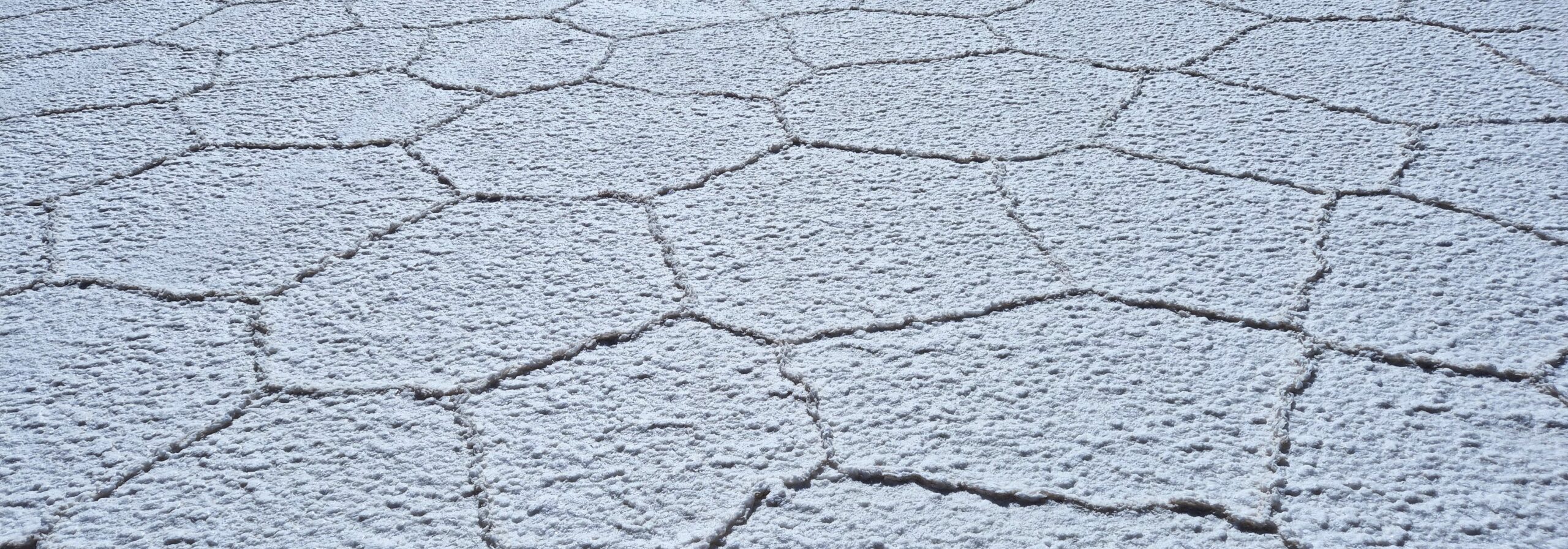Contrary to expectation, entering Bolivia’s Salt Flats is a gradual process. The ground does not suddenly turn from a rocky brown to a snowy white. Pale sprinkles begin to appear, becoming more and more frequent, until before you know it you are surrounded by a dazzling vista of pure white stretching infinitely in all directions, interrupted only by faint blue mountains on the distant horizon.
After speeding through this celestial scene for around forty minutes, we were delivered to a solid structure made from bricks which was overlooked by an immense Bolivian flag. It took us a second to realise that the bricks were made from salt, and the structure was a salt maze. Salt picnic tables with salt benches awaited successful maze-solvers outside the doorway, as robust as any structure made from ordinary bricks. The salt beneath our feet was not, as we had anticipated, powdery like snow, but hard crystals, glinting in the last of the day’s sunlight.

Bolivia’s Salt Flats is one of those scenes that your senses struggle to take in because it is nothing like anywhere you’ve been before. No photographs or videos can do justice to the vast expanse and otherworldliness of it all. Despite the landscape consisting simply of flat whiteness, it is impossible to stop staring all around you trying to comprehend it. The blanket of crisp white tricks the mind into preparing itself to feel the crunch of untouched snow underfoot and to screw up your face against an icy breeze but those mind games are debunked as soon as you jump from the car onto the crystal-hard surface and feel the warm sunlight on your cheeks, reflected off the bright ground. Instead, you stare around you, imagining the ocean of salty water that covered the area thousands of years ago, trying to put into context the sheer scale of the 11,000 square feet of the Salt Flats.

I was lucky enough to experience Bolivia’s Salt Flats both at sunset and at sunrise. At sunset, the sun sinks imperceptibly slowly, your shadow thinning little by little and stretching to impossible lengths along the flat ground. The air grows sharper and the sky glows yellow, firing rays of brilliant orange around the hovering clouds, before the sun finally dips below the horizon.

The next morning, a 5am start under a sky of twinkling stars is going to be worth it. In the half-light, an ascent to the highest point of Isla Incahuasi is a unique experience and another setting the mind struggles to process: this is a rocky island sprouting hundreds of bulbous cacti, some with thick trunks and towering many feet tall. It is difficult to convince your mind that the sea around the island, pale in the dim predawn light, is actually the packed salt of the Salt Flats.
From the highest point of the island, look east to where the sky is beginning to glow orange. At six o’clock sharp, the sun emerges from behind a gentle mountain in a blaze of fiery light. Little by little, the cold sky gains colour as you scramble back down the rocks, passing a deep coral cave created thousands of years ago when the area was underwater.

The endless flatness of the Salt Flats means that it is one of those rare landscapes in which you can play around with perspective in photos. One person becomes a giant with huge, clomping shoes hovering ominously over a tiny, Borrower-like counterpart silently screaming in anticipation of being crushed underfoot. Alternatively, a plastic dinosaur is magnified a hundred-fold, whilst miniature humans run for their lives to avoid the grasp of its vicious claws. The thankless photographer lies flat on their front on the ridged salt to capture the best shots.

I had expected the Salt Flats to be a bit of a tourist trap, or at least a bit overhyped. But it’s not. It’s genuinely one of the most incredible places I have ever been. The scenery is totally unique, and you can’t help but to keep staring around you, trying to take it all in. If you can make it to the Salt Flats for sunset or sunrise, you’ll have experienced one of the most breathtaking scenes on Earth.

